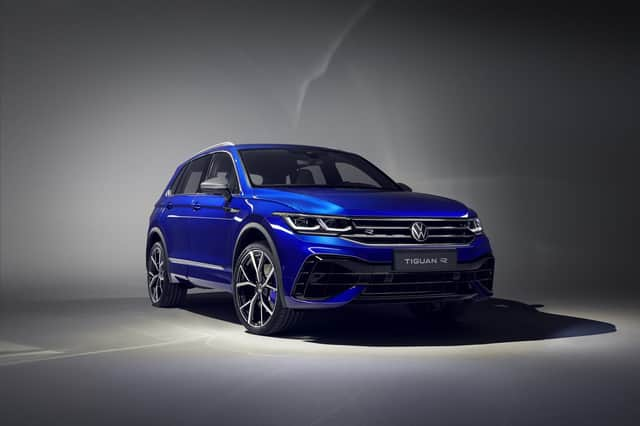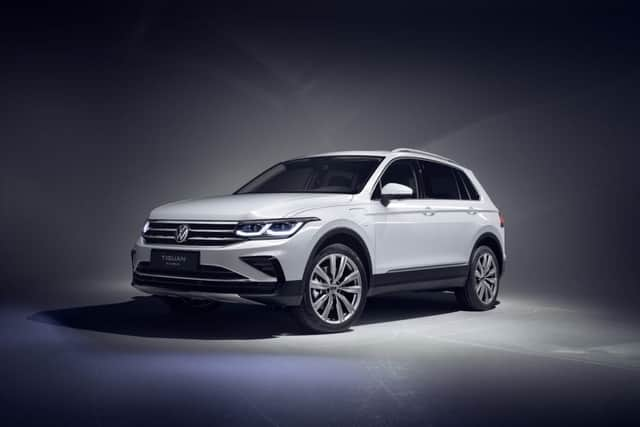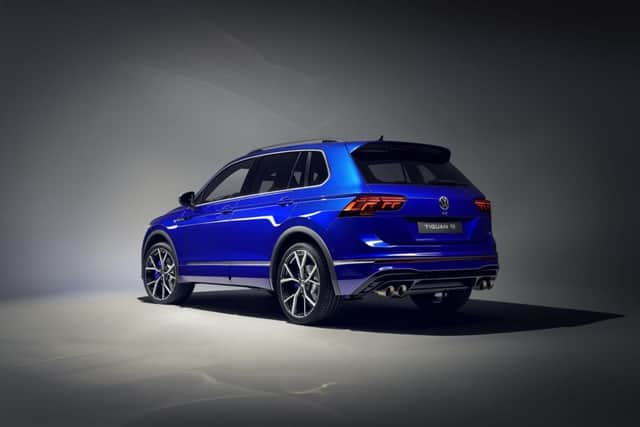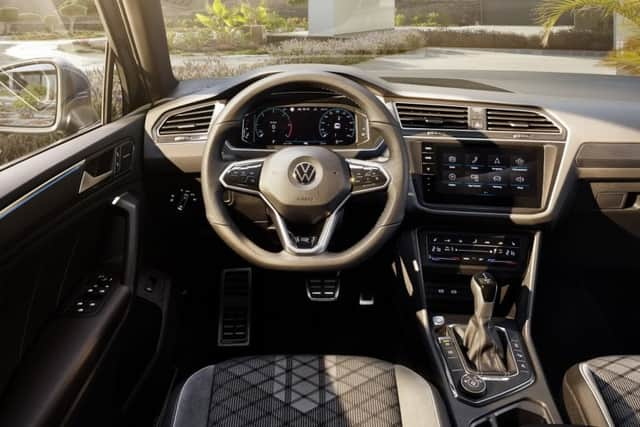Volkswagen Tiguan updated with plug-in hybrid and 316bhp R variants


Volkswagen has launched a significantly updated version of its Tiguan SUV, including a 243bhp plug-in hybrid model. The range, which goes on sale this autumn, has also been supplemented by a new 316bhp R variant.
First to reach the UK showrooms will be the top-selling petrol and diesel engines — including the 1.5-litre TSI and 2.0-litre TDI engines — with the new R model arriving before the end of the year. The Tiguan eHybrid PHEV will go on sale at the beginning of 2021.
Advertisement
Hide AdAdvertisement
Hide AdIt's worth highlighting that in 2019, more than 900,000 Tiguans were built, making it the best-selling car in the entire VW Group. So getting this update correct is a critical moment for the company. The first images show VW designers appear to have hit the nail on the head. The new front-end brings the SUV closer to the rest of the VW family, while the bumpers and trim have been tidied up to keep ensure the 2020 Tiguan is fresh from all angles. It’s also impossible to miss the new, bold brand design and badging.
Tiguan eHybrid
The eHybrid PHEV combines a 1.4-litre TSI petrol engine and 13kWh battery pack — the same combo as found in the Golf Mk8 PHEV — and offers up to 31 miles of zero-emission electric range.


The power combination is impressive too, with both sources delivering a combined output of 243bhp. Significantly, when the PHEV starts with a full charge, it does so in E-Mode as VW aims to reduce local emissions. The system also allows the Tiguan to travel at speeds of up to 81mph in electric-only mode.
Tiguan R
Powered by a revised 2.0-litre turbocharged four-cylinder petrol engine delivering 316bhp, the Tiguan R is, in essence, a rebodied version of the recently revised Cupra Ateca. Worth highlighting though that as VW sits above Seat in the Group pecking order, the Ateca ‘only’ gets 296bhp.
Advertisement
Hide AdAdvertisement
Hide AdThere’s no doubting the looks of the Tiguan R, with its aggressive exterior styling package and unique 21-inch alloys. There’s also four-wheel drive as standard, adaptive suspension and bigger brakes. Just for good measure, the options list includes an Akrapovic exhaust system and a new, seven-stage configurable traction control system.
Significantly, VW engineers have added a torque vectoring system to the Tiguan R’s four-wheel-drive chassis; the tech can send up to 100 per cent of the engine’s power to the outside wheels when cornering.


Styling and interior updates
This is no mild, midlife facelift; the cosmetic changes to the 2021 Tiguan are significant as VW has striven to tie the SUV’s styling in with that of the new Golf Mk8 hatchback. As a result, the Tigaun now boasts the same winged LED headlamps, broad bumper intakes, and radiator grille as the hatchback. To further enhance the Tiguan’s looks, there’s also a new bonnet, LED tail lights and tweaked rear diffuser.
Inside the cabin the driver gets a new sports steering wheel with touch-sensitive controls, plus there’s new capacitive buttons for the air conditioning and ventilation systems. The options list now also includes a 480-watt 10-speaker Harman/Kardon surround sound system and a configurable ambient lighting system.
Advertisement
Hide AdAdvertisement
Hide AdThe updated Tiguan also gets VW’s latest MIB3 infotainment system; this now includes a 10-inch digital instrument cluster and a central infotainment screen in either 6.5, 8 or 9.2-inch sizes. Apple CarPlay and Android Auto connectivity are now also supported by the system, as is support for natural voice commands.
As you would expect, safety technology is also high on the list, with the Tiguan now adding predictive adaptive cruise control, lane-keeping assist and front assist. There’s also VW’s new Travel Assist semi-autonomous driving function; this can assume control of the vehicle’s steering, acceleration and braking on the motorway at speeds up to 130mph.


Engines
While Volkswagen has yet to confirm the full engine line-up for the Tiguan, like the Ateca it’s fair to assume the range will include VW’s stable of petrol and diesel powerplants.
Expect the entry-level model to get VW’s turbocharged 1.5-litre four-cylinder unit, delivering 148bhp and 184lb ft of torque. A six-speed manual gearbox will be standard, though a seven-speed dual-clutch automatic will be on the options list.
Advertisement
Hide AdAdvertisement
Hide AdA less powerful version of the Group’s 2.0-litre four-cylinder petrol engine, delivering 187bhp and 236lb ft of torque, will sit below the ‘halo’ R model. Likely the 187bhp version will only be available with a seven-speed DSG and 4WD.
Diesel lovers are likely to get a choice of 2.0-litre four-cylinder engines. The 148bhp variant will certainly be in the range, though VW has yet to announce whether it will be supplemented by the 187bhp and 237bhp diesel engines of its predecessor.
Trim and specification
Buyers will be able to choose from four trim levels: a base-model, the mid-range Life, comfort-focused Elegance and sporty R-Line. Autonomous emergency braking, a multifunction steering wheel and LED headlamps will be standard across the range.
The new Life spec replaces the outgoing Match trim, and adds roof rails, adaptive cruise control, automatic air conditioning, main-beam assist, and 17-inch alloys.
Advertisement
Hide AdAdvertisement
Hide AdBuyers stepping up to the Elegance gain silver roof rails and an electrically opening and closing boot lid. The range-topping sport-focused R-Line gets figure-hugging sports seats, a sporty body kit, a new heated sports steering wheel.
Standard kit on both the Elegance and R-Line includes a larger infotainment system, a digital gauge cluster, a heated steering wheel and Matrix LED headlamps.